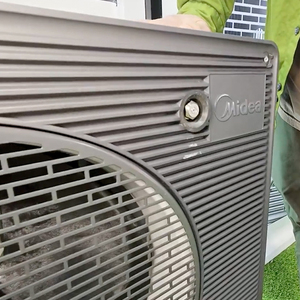I would like to hear the opinion of everyone out there regarding the use of a 2″ sand bed directly below a 4″ concrete slab. I originally specified the sand bed in my plans for downstairs living space in a new home. I understand that this allows the concrete to cure better.
However, others have told me that the 2″ sand bed underslab holds moisture and contributes to future mold and mildew problems.
I am inclined to eliminate the sand bed and pour directly over two layers of 6-mil plastic over pea gravel.
I thank you for any and all comments and suggestions.



















Replies
I have seen sand beds spected and use on commercial projects, and there have been no problems with them. Why would the sand hold moisture or create a problem? The plastic goes over any sand or peagravel used under a slab. Both provide a drainage plane beneath the slab and a cushion for expansion,contraction, etc. Sand is also less likely to cause the poly to get ripped, puntured, or torn than gravel under the slab.
Dave
Sand is used for a drainage for moisture like a gravel would, But around here we deleted this method. Due to that it is a plane for subsoil movement. Sand is very tight and compacted if kept confined and moisture. Without these property it can move and settled, which would create cracking of slab. It is prefrences to place on compacted red sand clay without gravel or sand around here. But remember, different parts of the county have different methods which work for them. Use the method that is common in your area.
My understanding; gravel (washed or compacted), plastic, sand then concrete.
The original poster was correct, I think about the reasoning.
david
If it were my slab, for a living space, I'd start with 6" of compacted well graded crushed stone, followed by a 2 to 4 inches of washed stone or pea gravel as a capillary break and cover that with plastic. If you've got water table problems, drop in a fench drain and sump to control sub-slab water buildup. When it comes to concrete I'm kind of a belt and suspenders kind of guy. I'm not sure sand is always the best choice for all geographical regions (as was stated previously).
Eric
all you do when placing sand above the vapor barrier and below the concrete is to allow the sand to wick moisture during the cure process. Around this area you pour over the vapor barrier. Under the VB is your aggregate in various sizes to provide moisture escape. Yes sand will hold moisture, as does concrete.
We changed our detailing in the last year from concrete pour directly over the vapour retarder to concrete pour over a layer of sand above the vapour retarder.
We found that the difference in moisture loss between the top and bottom surfaces of the slabs as they cured was causing the slabs to warp, dish down between joints.
The amount of distortion is almost imperceptible, so little as to be meaningless in a residential project. In industrial/loading bay applications, however, it raised concerns with the passage of heavy equipment. You could hear light clicking at regular intervals as loaded forklifts ran over control joints, causing very slight rocking of the individual slab sections. Placing sand above the retarder eliminated this concern in subsequent projects.
If you do place the vapour retarder below a sand layer, you should probably discuss responsibility of the retarder with your excavator and concrete contractor. Around here, most excavators assume it will be placed by the concrete cont. prior to the pour. With a sand layer above, you may want your excavator to do this work.
Best of luck.
as a concrete inspector, I can tesk from a quality point of view on concrete, that you DO NOT want to have sand above the vapor barrier. The purpose of the VB during placement is to retain moisute in concrete . This controls the heat which as a effect on cracking. Also if bottom of slab dries out before top surface, you get cracking, spalling and a weaker psi on bottom than top. This will get into structual problems later. The prurpose of VB after placement is to control moiture from wicking up through slab having effect on floor covers. Also during placement do not let finisher tear VB , this will cause an isolated moisture problem for covers and curing. When slab is place and finish, wet slab and cover with plastic for seven days, maintaining moisture. You want the slab to cool down slowly controlling stress cracking. All slabs do not crack, that is a myth. Controlling moisture (hydrations) and compaction of subsoils are the key items.
ive heard that the concreters will poke holes in the VB to help the water bleed out of the underside. Ive always thought logically thats not right. Glad to hear your side of the argument.
Hey Live Oak that's LA right? Lower Alabama? Getting tossed around about now. Used to live in LA myself. Stuck there like Dylan in Mobile (loved it). Brother still lives in Huntsville. Were starting now, to get the rain hear in Carolina.
Page 20 of Taunton's Graphic Guide to Frame Construction has the clearest details I've seen.
First pour I ever did, I used large rubble and broken bricks. The plastic was under that. I didn't know any better. It was miserable. I probably still looks miserable. Glad it was mine at the time.
david